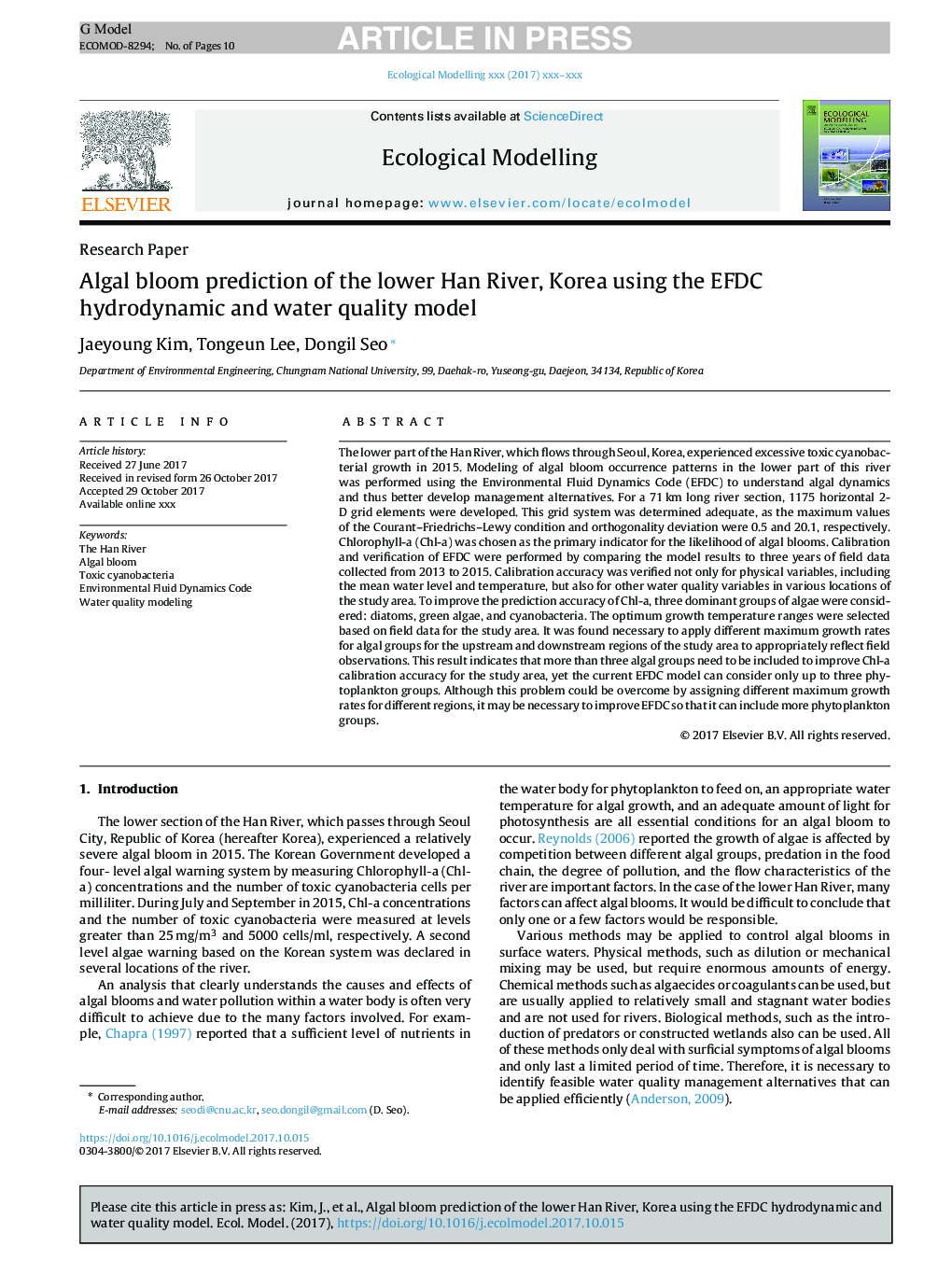| کد مقاله | کد نشریه | سال انتشار | مقاله انگلیسی | نسخه تمام متن |
|---|---|---|---|---|
| 8846172 | 1617381 | 2017 | 10 صفحه PDF | دانلود رایگان |
عنوان انگلیسی مقاله ISI
Algal bloom prediction of the lower Han River, Korea using the EFDC hydrodynamic and water quality model
دانلود مقاله + سفارش ترجمه
دانلود مقاله ISI انگلیسی
رایگان برای ایرانیان
کلمات کلیدی
موضوعات مرتبط
علوم زیستی و بیوفناوری
علوم کشاورزی و بیولوژیک
بوم شناسی، تکامل، رفتار و سامانه شناسی
پیش نمایش صفحه اول مقاله

چکیده انگلیسی
The lower part of the Han River, which flows through Seoul, Korea, experienced excessive toxic cyanobacterial growth in 2015. Modeling of algal bloom occurrence patterns in the lower part of this river was performed using the Environmental Fluid Dynamics Code (EFDC) to understand algal dynamics and thus better develop management alternatives. For a 71Â km long river section, 1175 horizontal 2-D grid elements were developed. This grid system was determined adequate, as the maximum values of the Courant-Friedrichs-Lewy condition and orthogonality deviation were 0.5 and 20.1, respectively. Chlorophyll-a (Chl-a) was chosen as the primary indicator for the likelihood of algal blooms. Calibration and verification of EFDC were performed by comparing the model results to three years of field data collected from 2013 to 2015. Calibration accuracy was verified not only for physical variables, including the mean water level and temperature, but also for other water quality variables in various locations of the study area. To improve the prediction accuracy of Chl-a, three dominant groups of algae were considered: diatoms, green algae, and cyanobacteria. The optimum growth temperature ranges were selected based on field data for the study area. It was found necessary to apply different maximum growth rates for algal groups for the upstream and downstream regions of the study area to appropriately reflect field observations. This result indicates that more than three algal groups need to be included to improve Chl-a calibration accuracy for the study area, yet the current EFDC model can consider only up to three phytoplankton groups. Although this problem could be overcome by assigning different maximum growth rates for different regions, it may be necessary to improve EFDC so that it can include more phytoplankton groups.
ناشر
Database: Elsevier - ScienceDirect (ساینس دایرکت)
Journal: Ecological Modelling - Volume 366, 24 December 2017, Pages 27-36
Journal: Ecological Modelling - Volume 366, 24 December 2017, Pages 27-36
نویسندگان
Jaeyoung Kim, Tongeun Lee, Dongil Seo,